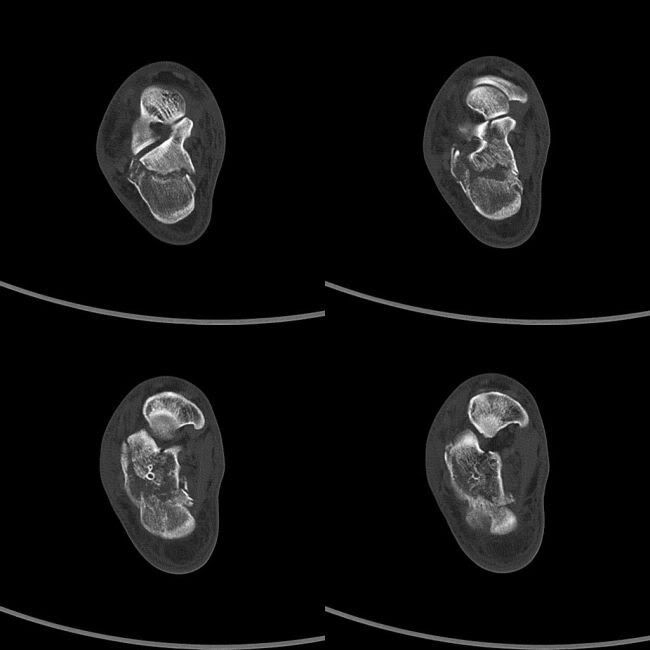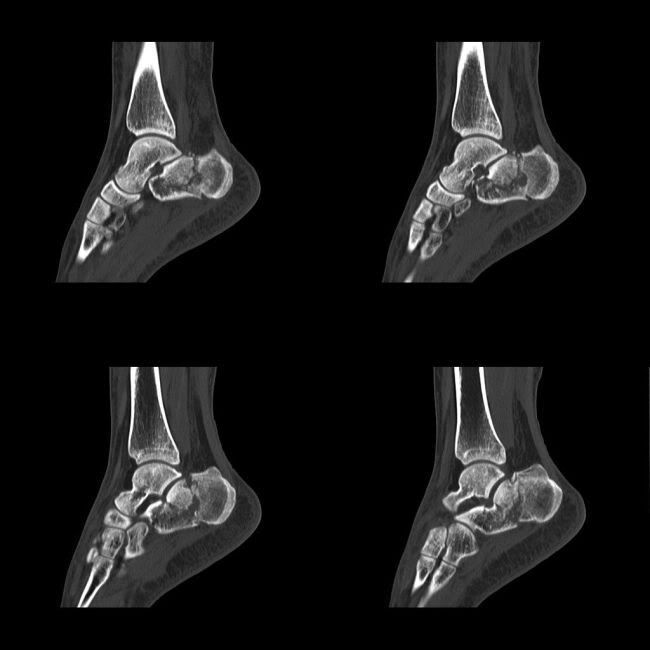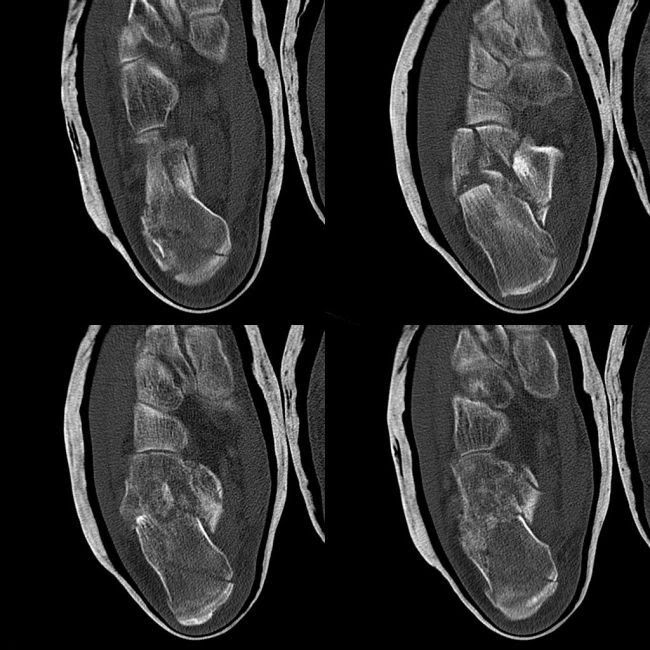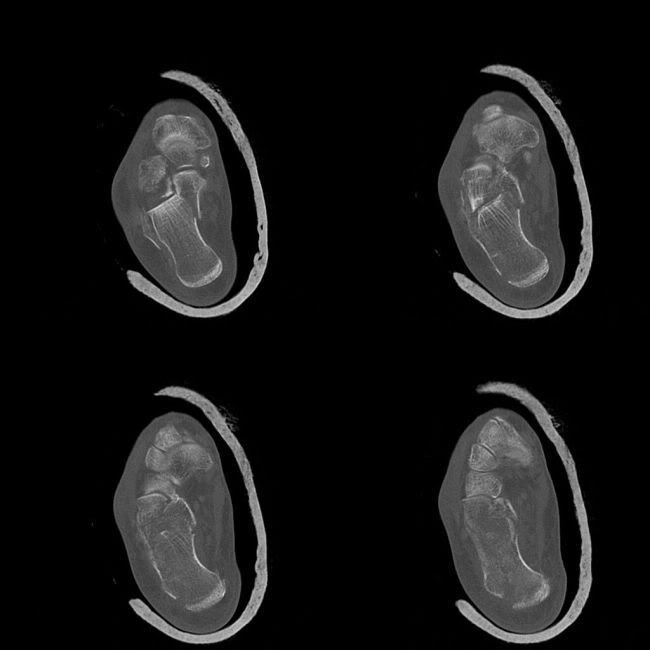Most common fractured tarsal bone
Most common mechanism is axial loading
Common in young men
Intraarticular fractures: (75%)
Due to axial loading
Produces loss of height (due to impaction and rotation of tuberosity fragment), increase in width (due to lateral displacement of tuberosity fragment) and disruption of posterior facet.
2 separate fracture lines - shear and compression
Sagittal shear fracture:
Fracture line runs through posterior facet, splitting it into anteromedial and posterolateral fragments; anteriorly to involve cuboid facet - in varus, line extends anteromedially; in valgus posterolateral; in extreme valgus, line may be lateral to posterior facet and extraarticular
Splits calcaneus into anteromedial sustentacular fragment and posterolateral tuberosity fragment
Medial fragment not displaced much due to thick medial talocalcaneal and interosseous ligaments; lateral edge of it may show displaced double split due to continued impaction of talus (middle fragment)
Lateral fragment dislocates laterally and remains impacted
Coronal compression fracture:
Wedging of anterolateral process of talus into angle of Gissane
Runs medially to split middle facet and anteromedial fragment
Vertical anterior limb runs through critical angle of Gissane
Posterior limb extends from mid point of vertical anterior limb horizontally towards tuberosity (tongue fracture) or obliquely vertically posterior to posterior facet (joint depression fracture).
Associated with tendon injuries due to sharp fragments or entrapment, compartment syndrome, spinal burst fractures (thoracolumbar junction)
Sander's classification: Type I undisplaced, II 2 pieces, III 3 pieces, IV 4 or more pieces
Extra-articular fractures: (25%)
Do not involve posterior facets
Anterior process fracture:
Forced inversion or forced abduction & dorsiflexion
Best seen on oblique views
Usually treated with protected weight bearing, but involving more than 25% of calcaneocuboid articular surface are treated with ORIF
Complication includes non-union.
Calcaneal body fracture:
Due to axial loading
Associated with injuries to appendicular and axial skeleton
Better prognosis than intraarticular fractures
Usually managed conservatively and heal normally
Fracture sustentaculum tali:
Due to axial loading and inversion
Usually treated conservatively with non-weight bearing or fixed by screw
Associated with FHL tendon injury
Nonunion is common.
Calcaneal tuberosity avulsion fracture:
Commonly occur in elderly porotic patients due to avulsion of tendo achillis
Initial immobilization in slight equinus position followed by urgent ORIF
Medial process of calcaneus fracture: (abductor hallucis, flexor digitorum and plantar fascia attach to medial process of calcaneus)
Due to fall from height
Treated with ORIF.
Stress fracture:
click here
References:
Daftary A et al. Fractures of the Calcaneus: A Review with Emphasis on CT. RadioGraphics 2005;25:1215-1226
Image Gallary:
Anterior process fracture:
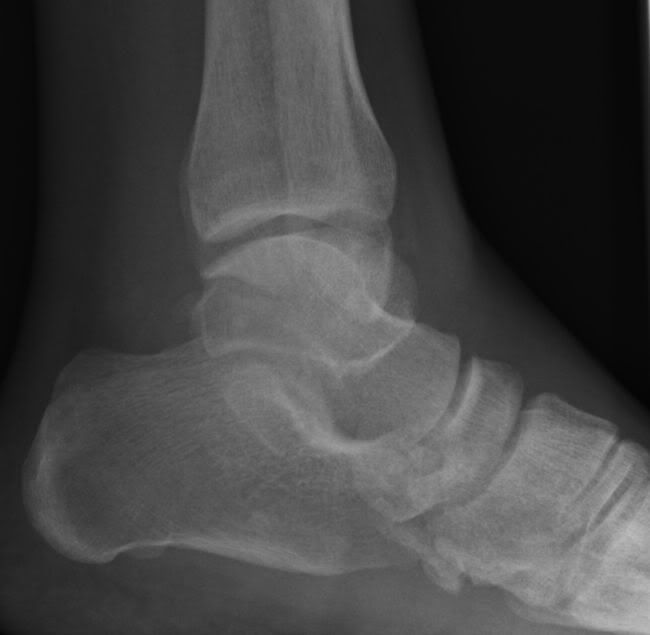

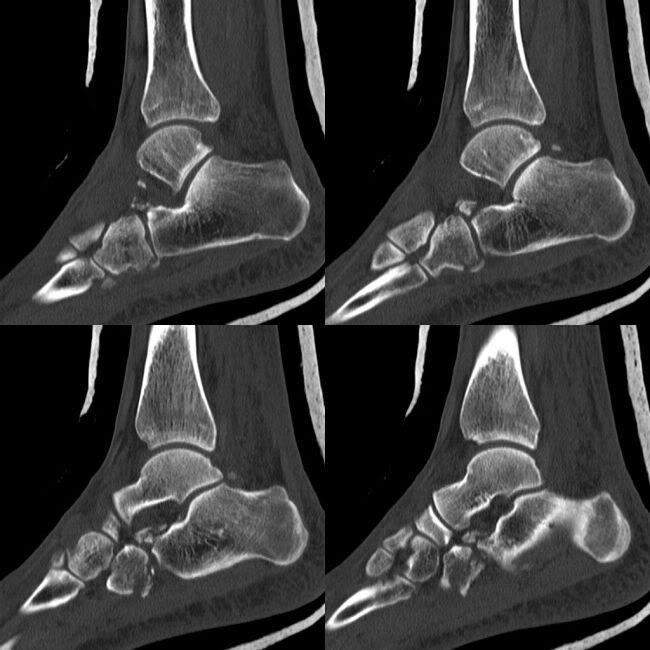
Plain radiographs of intraarticular fractures:

CT of intraarticular fractures:
